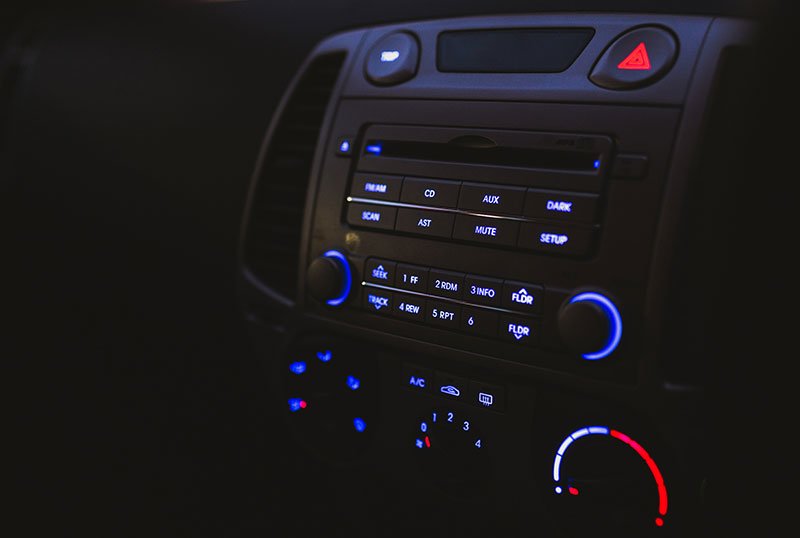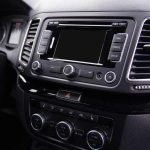Most cars come with a stock stereo system that only comprises a basic receiver and dull speakers. There’s little to boast about a stock car stereo. The kind of sound you get from a stock stereo system is below average. You can only get enhanced sound in your car by upgrading your car stereo. Upgrading your car stereo will demand to the installation of an aftermarket receiver, aftermarket speakers, and an amplifier. However, there’re certain things you need to know before doing the upgrade. Without having the right information on how to go about it, you might end up wasting your money and effort. Here’s what you need to know and factors to consider before upgrading your car stereo.
Consider the Components to Upgrade
When doing an upgrade to your car stereo, you need to start with considering the components you’ll include. For the most basic and above-average car stereo system, you’ll need three key components which are a receiver, car amplifier, and car speakers. You can also consider adding a subwoofer if you need deeper bass. Upon deciding on the components to install, you’ll need to choose them wisely for the best sound. For instance, you need to know the features and factors to look out for when choosing each of the main components.
What to Know When Choosing a Car Receiver
Start by knowing the kind of receiver you’ll choose when doing an upgrade. The receiver is like the brain of a car stereo. It’s where you play music from and control the music. The kind of receiver you choose should depend on the kind of features you need. Nevertheless, here’re the basic factors to consider when choosing a receiver for your car stereo:
1. Does it have an inbuilt preamp?
You’ll need to go for a car receiver that has an inbuilt preamp. A preamplifier processes sound signals for further amplification by the amplifier. A preamp ensures that the sound signals current sent to the car amp are ready for amplification. If you really want crystal clear sound, then a preamp is a necessary feature to consider in a receiver. Different receivers usually have different numbers of preamplifier outputs. Choose the one that has enough outputs to support the kind of car stereo you want. Also, choose a receiver with a higher output voltage for a cleaner sound.
2. Receiver display
Almost all receivers come with a screen display. The role of the display is to show information about various music details and controls. Different stereo receivers come with different kinds of displays. The best display is the one that can display most options. For instance, some modern receivers are capable of displaying still and moving images such as GPS mapping and music videos. Others can be connected to rear cameras for easier reversing and car parking.
Receiver displays also vary in size. The larger the size, the easier it will be to view the displayed details. You can also find a receiver with a touch screen display. Touch screen displays replace the use of control knobs such that you’ll easily control various options with the touch of a finger. Touch screen receiver displays are highly responsive such that you won’t struggle to control the receiver while driving.
3. What features does the receiver have?
Another factor to consider when choosing a receiver or head unit for your car stereo upgrade is the features that come with the receiver. Today, wireless connectivity is of major importance in sound systems. Thus, consider a receiver that allows for wireless connectivity via Bluetooth technology. Bluetooth will allow you to stream music from your smartphone wirelessly such that you won’t have to carry bulky and fragile compact discs. You’ll also make and answer calls hands-free via Bluetooth, thereby allowing for a safer driving experience.
You can also consider a receiver that can be controlled by a smartphone, either an Android or Apple smartphone. For instance, some modern car receivers support Apple CarPlay and Android Auto, whereby you can access information and apps on your Apple or Android smartphone from your car receiver. These systems will allow you to access apps such as music apps and mapping apps. Moreover, you can use voice commands to control the apps such that you’ll be less distracted while driving.
A receiver with support for mapping would be a plus. It will help when navigating to new locations. You’ll easily know the best route to use to get to a new destination faster without getting lost. Moreover, inbuilt GPS mapping will make it easier to navigate while driving unlike navigating using your smartphone.
Also, support for USB is another crucial feature to consider. A car receiver with a USB port will allow you to stream music from USB drives such as your phone, USB memory card adapters, and flash disks. Flash disks have larger storage space than CDs and are more portable. They’re as simple to use as plug and play. Moreover, CDs are becoming outdated and are getting replaced by USB and wireless streaming. However, if you still want to listen to the now old-school CDs, then consider a receiver that can play CDs.
If you love listening to the radio, then consider a receiver that has both AM and FM radio reception capabilities. While most people have moved away from traditional AM and FM radio receivers to internet radio streaming, you can still consider them if you’re a fan. You can also consider support for satellite radio and HD radio.
You’ll also have to choose between a single DIN and double DIN car stereo receiver. Single DIN head units are smaller in size than double DIN head units. Single-DIN receivers offer basic features while double-DIN receivers offer more features due to their larger size. On the same note, double-DIN receivers are more expensive than single-DIN receivers. Your choice should depend on the features you want, the available space on your dash, and your budget.
What to Know When Choosing Car Speakers
With the right receiver, you’ll also need high-performance speakers for the best sound. Speakers come in different sizes, shapes, and types. They’re all designed to reproduce sound, but they’re not built the same. Thus, you need to make certain considerations when choosing car speakers for your car stereo upgrade. Here’s what you need to consider:
1. Speaker type
The main types of car speakers are component speakers and coaxial speakers. Component speakers, to start with, are speakers that comprise a single driver system. They include a tweeter speaker, a midrange speaker, and a woofer speaker. A tweeter speaker reproduces high-range frequencies, a midrange speaker reproduces midrange frequencies, and a woofer reproduces low-range speakers. With component speakers, you’ll choose the speakers depending on the kind of frequency range you want. You’ll also have the freedom to set up a custom sound system. However, you’ll have to install multiple component speakers to enjoy full-range sound such that they’ll take a lot of space in your car. They’re also more challenging to work with.
On the other hand, coaxial speakers are all-in-one speakers that come with multiple driver systems that are built into one speaker basket. As such, a single coaxial speaker has the ability to offer full-range sound. Coaxial speakers can be 2-way, 3-way, or 4-way driver systems. A 2-way speaker comes with a tweeter and a woofer. A 3-way speaker features a tweeter, woofer, and midrange driver whereas a 4-way speaker features a tweeter, super tweeter, woofer, and midrange driver. Thus, coaxial speakers take less space in a car and are easier to work with than component speakers.
2. Speaker power rating
You’ll need to choose speakers that can handle the power that a receiver or amplifier outputs. For instance, if your amp delivers 150 watts RMS for each channel, then consider choosing speakers that can handle more than 150 watts RMS. Doing so will ensure that the speakers are not overpowered or underpowered for the best sound. You’ll also ensure that your car stereo components don’t burn out. Feeding speakers with more power than what they can handle may damage them.
3. Speaker sensitivity rating
The loudness of a speaker, based on the amount of power it receives from a receiver or amp, is rated in terms of speaker sensitivity. Speaker sensitivity is denoted in decibels (dB). If your amp or head unit has a low power output, then you should go for a speaker with a high sensitivity rating. On the other hand, if your amp or head unit has a high power output, then you won’t have to worry about the sensitivity of your car speakers. Thus, the best thing is to ensure your amp or receiver has high power output.
Need More Bass?
If you’re a bass enthusiast, regular car speakers may not satisfy your bass needs. In this case, you’d want to Subwoofers. Subwoofers are specially designed to reproduce the lowest sound frequency for enhanced bass response. You can choose between a component subwoofer and a powered subwoofer. With a component subwoofer, you’ll need to connect it to an amplifier for optimum performance. On the other hand, a powered subwoofer comes with an inbuilt amplifier such that you can connect it directly to a receiver without having to invest in an amplifier. Subs come in different sizes. Go for the size that will fit in your car. If you want a really big sub, then you may have to install it in the trunk.
What to Know When Choosing a Car Amplifier
To get the most out of your speakers, you can add an external amplifier. Here’re the factors to consider when choosing a car amp to upgrade your car stereo.
1. Amplifier power rating
A key factor to consider before upgrading your car stereo is the amplifier power rating. When choosing a car amplifier, you can’t pick just any amp you find in the market. You need to consider the amount of power it can deliver. An amp with a high power rating will deliver more power such that your stereo will be louder with more clarity. Ensure the amp you choose is powerful enough to handle the power rating of your speakers. In case the amp outputs more power than what your speakers can handle, then avoid turning the volume all the way up to prevent distortion and damaging your speakers.
2. Number of channels
Different amplifiers have different numbers of channels. It would be best to buy one that has more channels just in case you’ll want to add more speakers and a subwoofer at a later date. Most amps have two to eight channels. Basically, you’ll need one channel for each speaker and one channel for adding a sub. Thus, if you have several speakers and subs, you’ll need more channels.
In conclusion
Upgrading your car stereo can be a challenging process if you don’t know what to consider. As this guide points out, you need to know the basic components you’ll need for your car stereo and the key features that each of the components should have. While it’s important to consider your budget, always go for high-quality components. You’d rather spend a little bit more on a great car stereo system and enjoy high-quality audio. You can actually install the components on your own to save some money. If it seems too complicated to do it yourself, you can have a professional install the car stereo components at a price. Once you know the factors to consider before upgrading your car stereo, you’ll be one step closer to getting your dream car sound system.
Michael Evanchuk is a San Francisco-based sound engineer with 20 years’ experience installing, troubleshooting, and repairing commercial, automotive, and household sound equipment. Evanchuk owns an auto stereo center, where he offers highly competitive car audio installation and repair services. He has written dozens of articles on different sound engineering topics, all of which have been published in leading journals, blogs, and websites.





